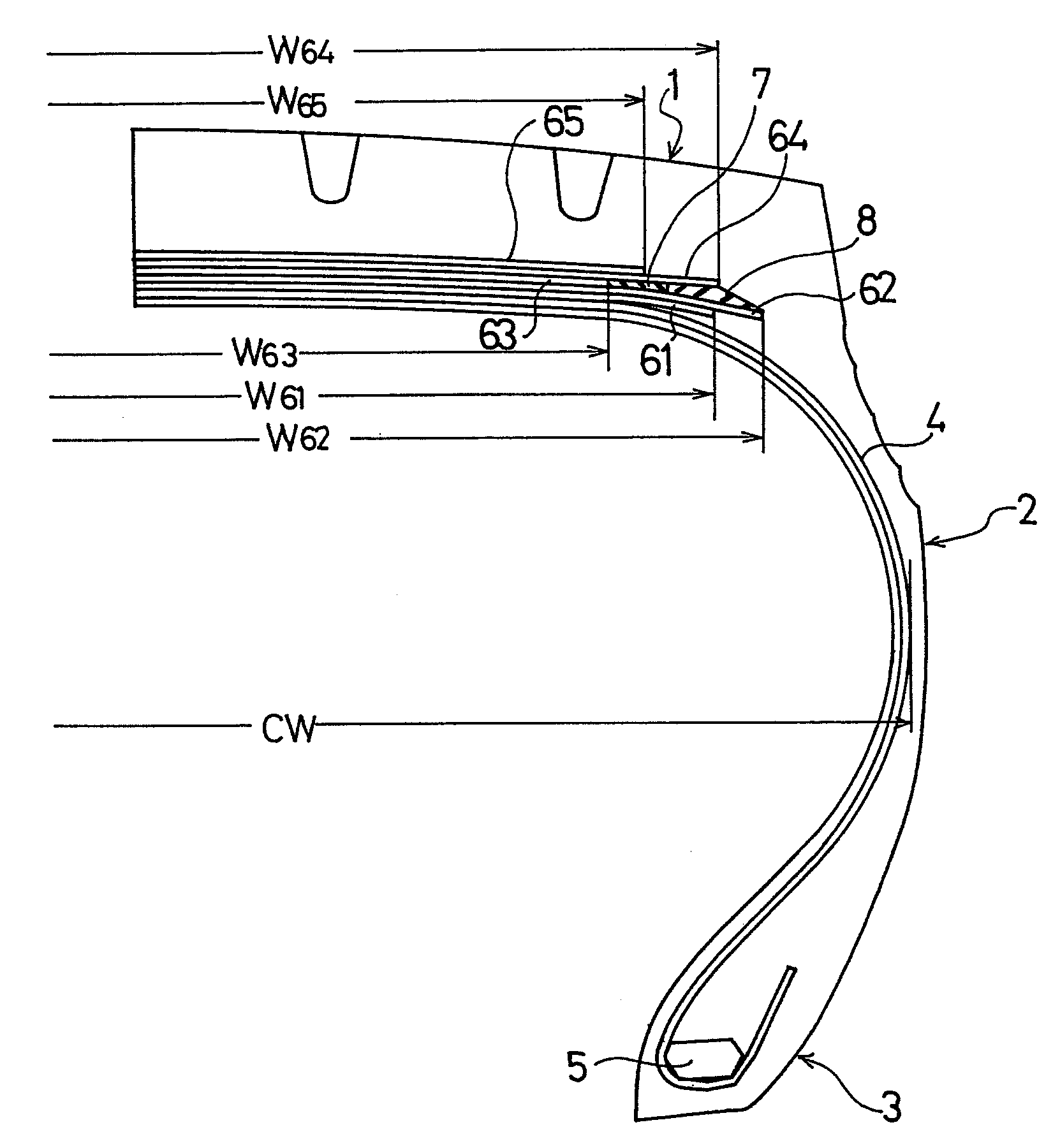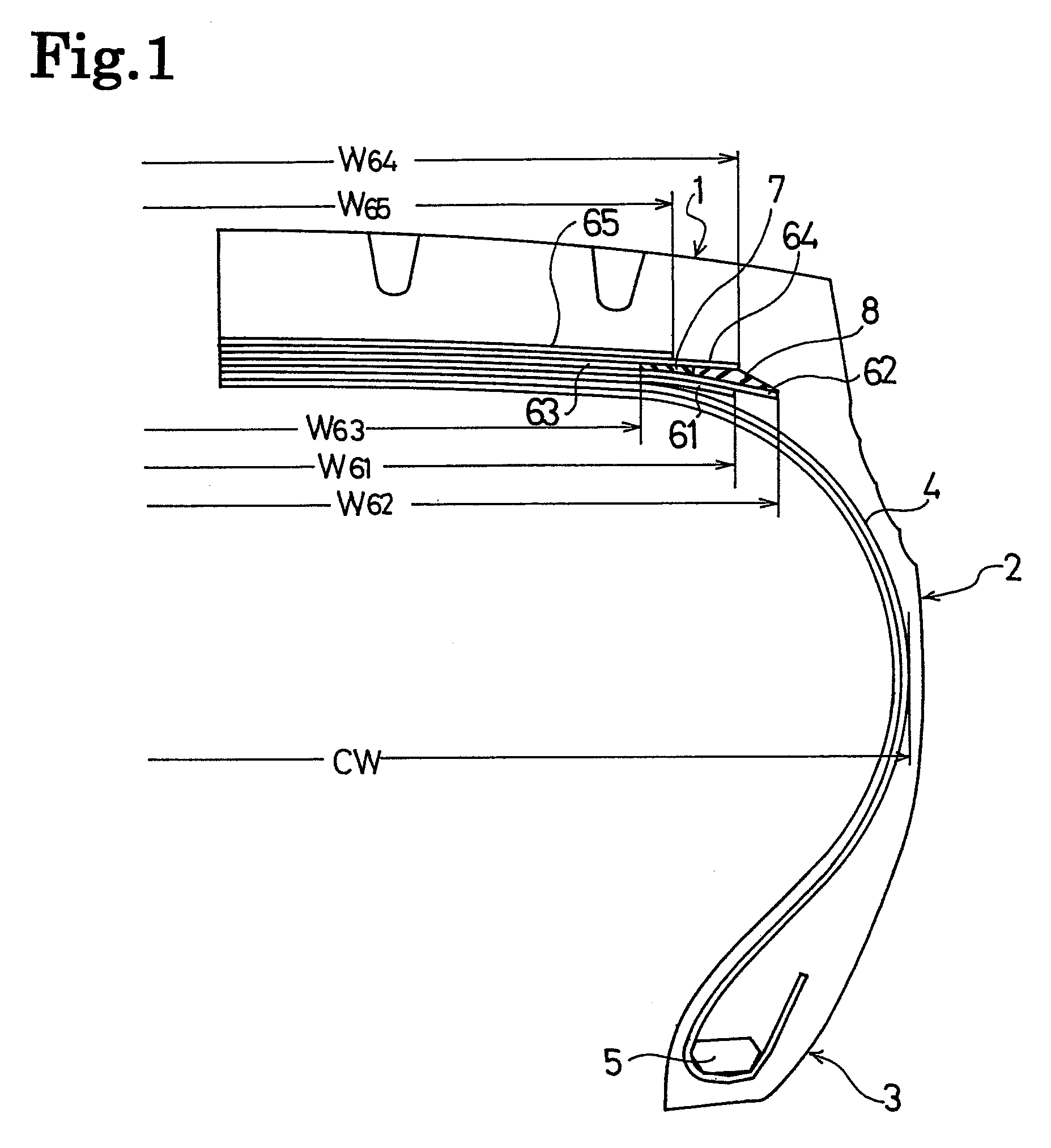Pneumatic tire
a technology of pneumatic tires and reinforcing belts, which is applied in the field of pneumatic tires, can solve the problems of easy fatigue of the circumferential-direction reinforcing belt edge portion, and achieve the effects of reducing the risk of fatigue rupture, and increasing the width
- Summary
- Abstract
- Description
- Claims
- Application Information
AI Technical Summary
Benefits of technology
Problems solved by technology
Method used
Image
Examples
examples
[0040]Tires of Examples 1 and 2 were manufactured each of which was provided with a stress relaxation layer and an edge-portion buffering layer disposed between the crossed belt layers and outside, in width directions, of the circumferential-direction reinforcing belt layer. Each tire had a tire size of 435 / 45R22.5 164J, and a high-angle belt layer (first belt layer), a crossed belt layer (second belt layer), a circumferential-direction reinforcing belt layer (third belt layer), a crossed belt layer (fourth belt layer), and a protection belt layer (fifth belt layer) were disposed on the outer circumferential side of a carcass layer. For comparison, a conventional tire which had the same structure as those in Examples 1 and 2, except that a stress relaxation layer was not provided therein, was prepared. Note that, a modulus at 100% elongation of the rubber composition that covered the cords of all the belt layers was set to 6.3 MPa, and a modulus at 100% elongation of the rubber comp...
PUM
 Login to View More
Login to View More Abstract
Description
Claims
Application Information
 Login to View More
Login to View More - R&D
- Intellectual Property
- Life Sciences
- Materials
- Tech Scout
- Unparalleled Data Quality
- Higher Quality Content
- 60% Fewer Hallucinations
Browse by: Latest US Patents, China's latest patents, Technical Efficacy Thesaurus, Application Domain, Technology Topic, Popular Technical Reports.
© 2025 PatSnap. All rights reserved.Legal|Privacy policy|Modern Slavery Act Transparency Statement|Sitemap|About US| Contact US: help@patsnap.com



